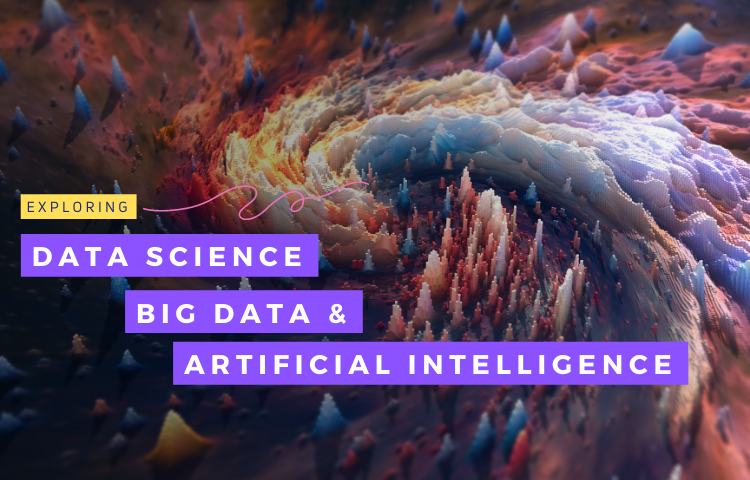

Prefer to listen instead? Here’s the podcast version of this article.
The world of technology is constantly changing, and one area that has seen tremendous growth in recent years is data. We often hear the terms “Big Data,” “AI,” and “data science” thrown around, but what exactly do they mean? How are they different or related, and why should you care? Understanding the nuances between them is vital to understanding how they work together and how they can help businesses in various ways.
Data science is a rapidly growing field that combines the power of mathematics, statistics, and computer science to extract knowledge and actionable insights from data in various forms. In its simplest form, data science involves collecting and analyzing large amounts of data to gain insights and solve problems. In recent years, the field of data science has seen rapid growth due to the increasing availability of data from various sources. This flood of data has led to the development of new techniques and tools for storing, processing, and analyzing this data. Data science has become an integral part of our lives, from predicting election outcomes to helping businesses make better decisions. It’s helpful to think of data science as the broader “umbrella” discipline that includes Big Data and artificial intelligence (AI).
Data science and big data are interdependent. The field of data science isn’t possible without big data. Big Data is the large volumes of data collected from various sources, such as websites, social media, customer feedback systems, etc. Big data can include everything from customer behavior to market trends. It is used to gain insights into user behavior, identify patterns, predict future outcomes, and more. By leveraging big data, businesses can make better decisions about product development, pricing strategies, marketing campaigns, and more.
Big Data encompasses complex data sets characterized by the following factors:
With these characteristics, it’s easy to understand why such complex, large, and diverse data sets need other methods to process the information.
Think of AI as the power used to solve the problem. While Big Data deals with analyzing large data sets, artificial intelligence (AI) takes things one step further by using algorithms to interpret that data and generate new insights. Various AI methodologies, from machine learning to computer vision to natural language processing, are leveraged to translate the data into relevant information. For example, machine learning algorithms detect patterns in the data, which are then used to build predictive models. Companies can then use these models to make decisions based on future predictions rather than just past trends. For example, an AI system could use historical sales data to predict future sales trends or customer behavior.
Although Big Data and AI are two distinct concepts, they have one thing in common: both rely on data to function properly. By leveraging both technologies, businesses can gain valuable insights into their customers’ behavior that can help them make better decisions about their products or services. For example, big data analytics allow companies to identify customer preferences or trends that could be beneficial when creating new products or services. With artificial intelligence algorithms, companies can use predictive analytics to anticipate customer needs or behaviors before they occur. That’s why businesses need to understand the differences between Big Data and AI and the relationship between them.
Real-World Context
Netflix is one of the world’s most popular streaming services, with over 137 million subscribers in over 190 countries. And it’s no wonder why – Netflix offers an impressive selection of TV shows, movies, and documentaries, all available with the click of a button. But how does Netflix manage to keep its users happy and engaged? A big part of the answer lies in big data and artificial intelligence (AI).
Netflix collects a tremendous amount of data on its users’ viewing habits. It knows what shows you watch, when you watch, how often you watch them, and more. It also considers user reviews, social media engagement, and ratings. All of this data helps Netflix to create personalized recommendations for each individual user. This data is then used to improve the user experience in a variety of ways. For example, Netflix uses AI to recommend new content you might like based on your previous viewing history. They also use AI to improve the quality of their streaming service by constantly testing and tweaking the algorithms that power it. As a result, Netflix can offer its users an amazing experience that is always getting better.
Data science, big data, and artificial intelligence are often spoken about as if they are three separate fields. However, the reality is that these disciplines are deeply intertwined. Data science relies on big data to find patterns and insights. Artificial intelligence, meanwhile, takes those patterns and uses them to create predictive models. In many ways, data science is the foundation upon which artificial intelligence is built. Without big data, there would be no way to train artificial intelligence models. And with data science, there is a way to understand the complex patterns within that data. In short, data science, big data, and artificial intelligence are three essential pieces of the same puzzle.
WEBINAR